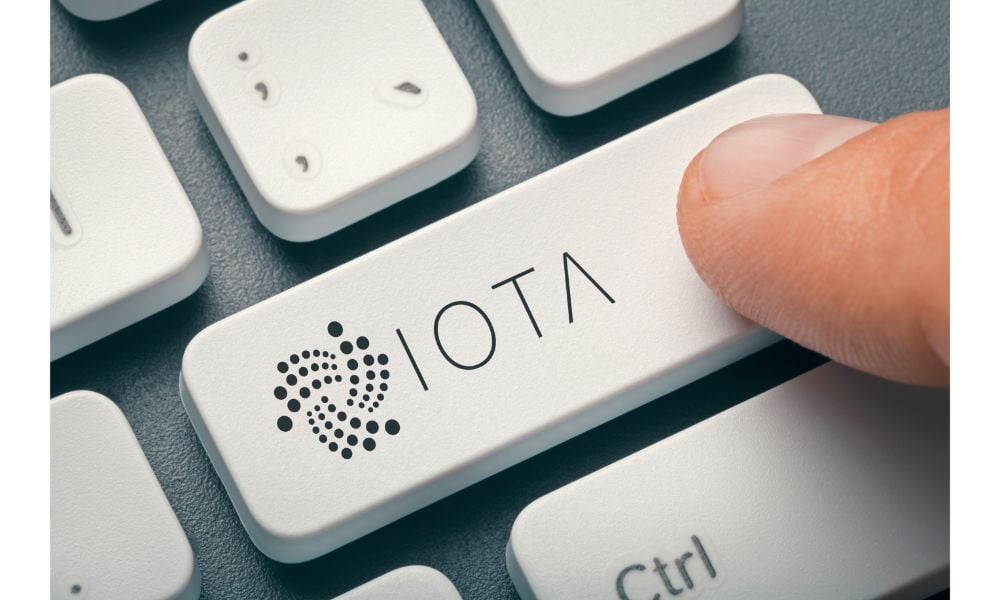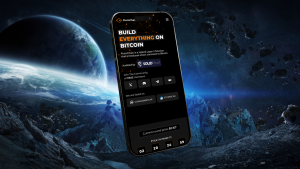- IOTA has strategically embraced Directed Acyclic Graphs (DAG) as a fundamental component in its mission to further enable Digital Autonomy for everyone.
- The adoption of DAG in IOTA’s Tangle architecture offers numerous advantages, including parallel and stream processing, elimination of middlemen, and a distributed consensus mechanism.
In the ever-evolving landscape of blockchain technology, Directed Acyclic Graphs (DAG) have emerged as a pivotal element, and IOTA has been at the forefront of their implementation.
IOTA notes that choosing DAG was a deliberate strategy rooted in IOTA’s mission to enable Digital Autonomy for Everyone.
Why DAG Over Proof of Work
In the early days of the Distributed Ledger Technology (DLT) era, Bitcoin introduced a straightforward yet effective approach to ledger maintenance. Its pioneering mechanism, known as Proof of Work (PoW), ingeniously amalgamated the consensus mechanism – which dictates which data gains entry into the shared ledger – with the access module. Thus, PoW controls who possesses the privilege to publish on the network. Also, PoW hinged upon the mining of fresh blocks, effectively fusing these pivotal elements into a single dynamic.
Nevertheless, while PoW’s simplicity garnered attention, it also exposed certain vulnerabilities. This design encourages fierce competition among users vying to have their transactions included in the ledger, inevitably leading to escalating fees during periods of heightened network activity.
Transitioning from Proof of Work to Proof of Stake
These limitations in blockchain technology led to the IOTA Foundation exploring effective and better solutions. The most noteworthy innovation emerged in the form of Proof of Stake (PoS) blockchains, designed to obviate resource-intensive computational work. PoS systems mandate users to lock their tokens as collateral—staking their tokens—in order to participate in a lottery for block mining. While PoS addresses concerns related to energy consumption, it fails to mitigate the fundamental problems inherent in blockchain:
- Sequential Processing: PoS blockchains still necessitate processing blocks in sequence, leading to wasteful idle periods for validators who aren’t actively utilizing their hardware.
- Dependence on Validators: Users remain reliant on validators to broadcast their transactions on the network, creating issues related to fees and value extraction.
An obvious choice: We adopted a #DAG architecture to overcome the limitations of blockchain technology. Read our latest blog post to understand how a DAGs’ collaborative approach aligns with #IOTA 2.0 objective of #DigitalAutonomy For Everyone.
https://t.co/gCczOa3tgJ pic.twitter.com/PGsLjnsXlC
— IOTA (@iota) November 8, 2023
For IOTA, the aspiration transcends merely participating in the blockchain arena; the goal is to lay the foundation for the Web 3.0 economy, promoting digital autonomy, and cultivating a self-sustainable ecosystem. As a result, IOTA embarked on the development of the Tangle, a distinct data architecture rooted in the DAG structure. This innovative framework enables more imaginative solutions and significantly enhances the efficacy of IOTA in realizing its vision.
Advantages of DAG
The Tangle’s unique network design allows for non-linear block approval, forming a Directed Acyclic Graph (DAG). The adoption of DAG addresses numerous bottlenecks that have historically hindered conventional blockchains from achieving meaningful scalability. IOTA leverages the inherent advantages of DAG to mitigate these issues::
- Parallel Processing: Blocks can be processed simultaneously, reducing idle time and increasing computational efficiency.
- Stream Processing: Continuous validation optimizes hardware usage and speeds up confirmations.
- No Middlemen: IOTA users can create their own blocks and transactions without mining or intermediaries, enhancing efficiency and preserving asset value.
- Distributed Consensus: DAG enables a more inclusive validation system, involving all users in consensus-building and rewarding active participation.
The decision to build upon a DAG structure wasn’t arbitrary but rather a strategic imperative for IOTA. DAG aligns with IOTA’s mission to empower the community, bestow autonomy upon users, and position itself as the cornerstone of the future digital economy.























